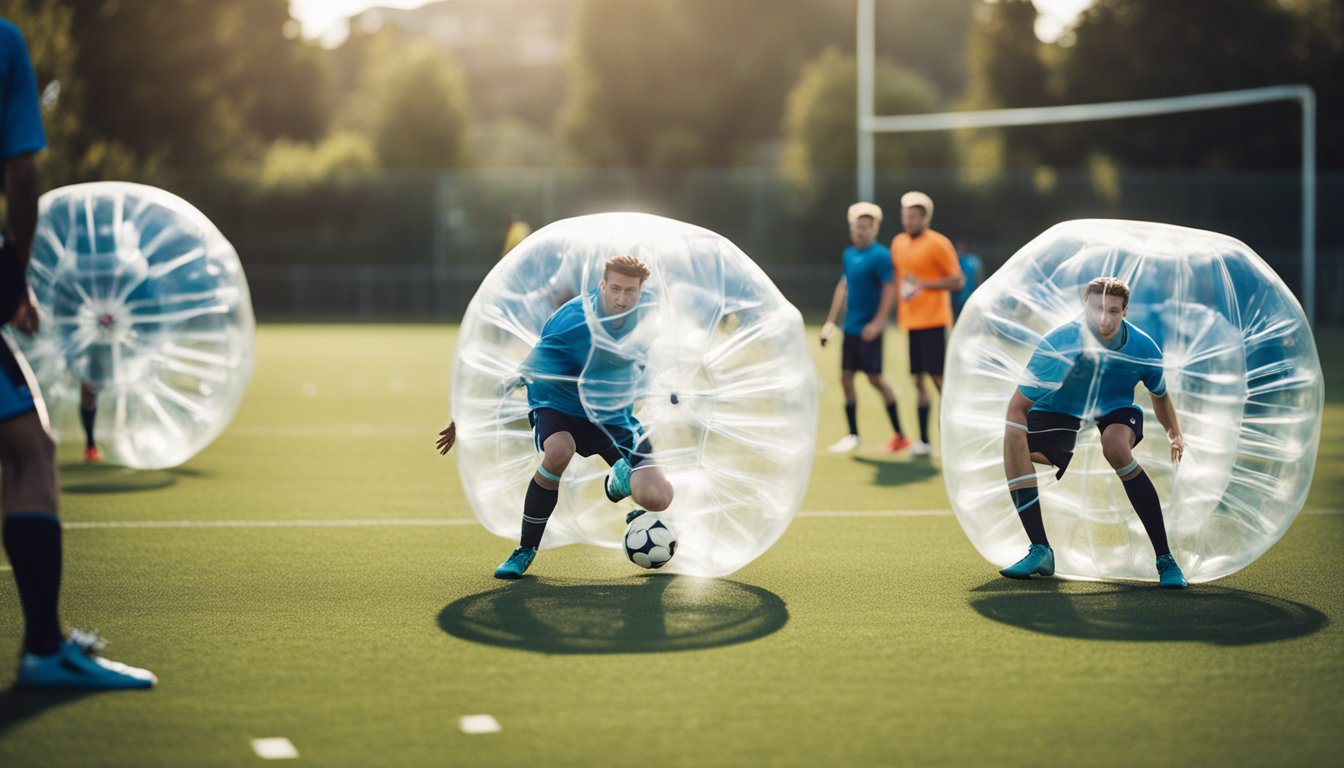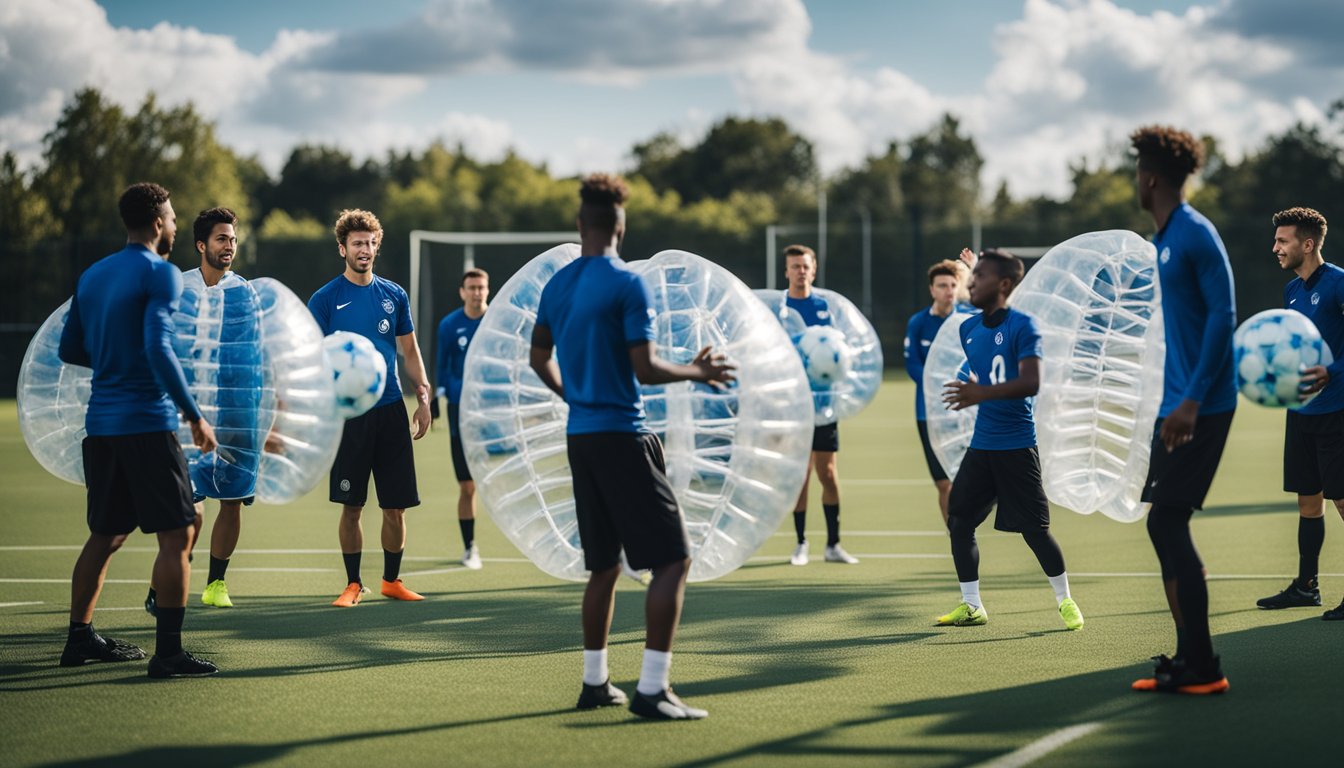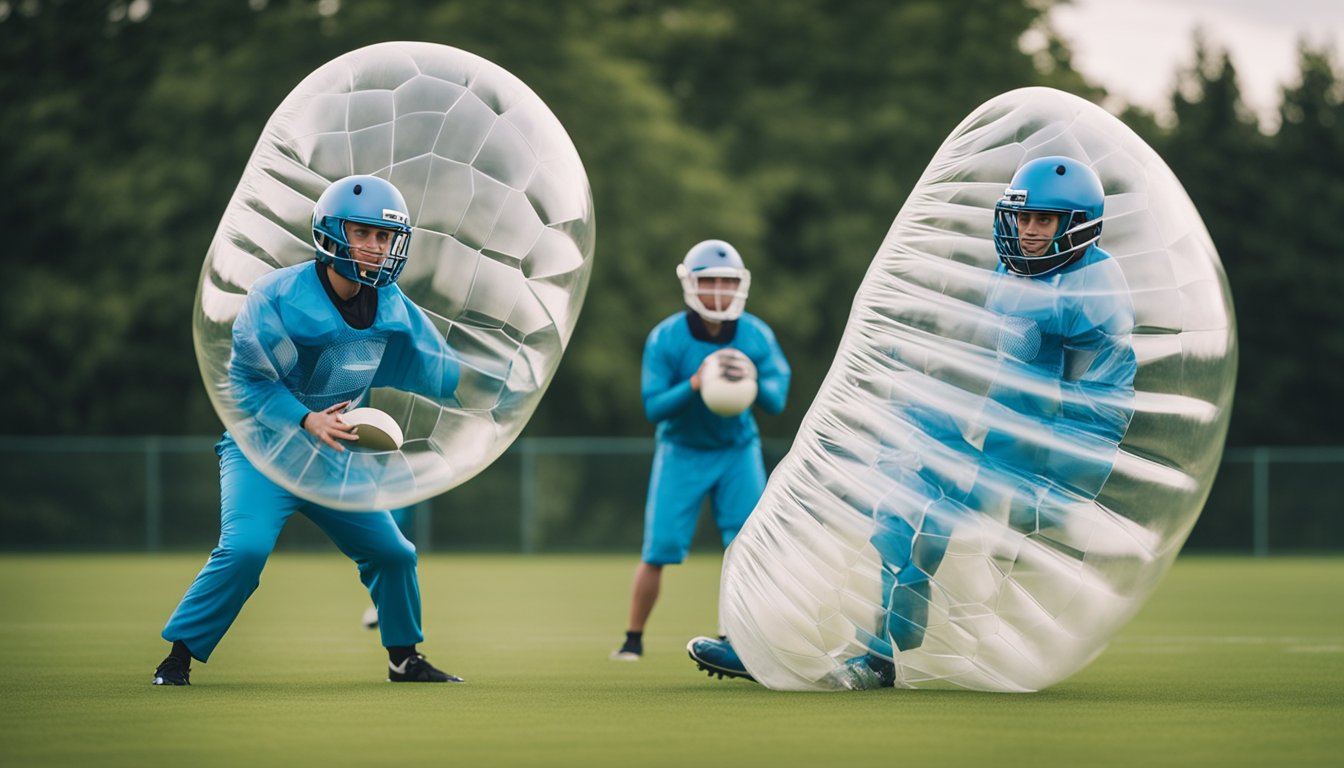Late updated: 21 Jul 2024 13:07
Written by: Emma Saunders
Mastering Advanced Bubble Football Techniques: Tips for Excellence
Mastering advanced bubble football techniques can take this fun and energetic sport to the next level. By honing core abilities and incorporating strategic play, we can dominate any bubble football game. Our blog will explore the essential skills you need and advanced strategies that will set you apart from the competition.

Training in bubble football requires a mix of physical fitness and sharp football skills. From controlling our bubbles to executing precise maneuvers, the techniques we develop will improve our game drastically. We'll also look at the importance of teamwork and how communication enhances our performance on the field.
Engaging in regular practice sessions focused on bubble football dynamics allows us to experiment and refine our techniques. We'll dive into practical drills and tips that ensure we stay ahead. By the end, you'll be equipped with the knowledge to outplay your opponents with advanced strategies and help your team secure victory.
Key Takeaways
- Improve core bubble football abilities through targeted training
- Master strategic play and enhance team dynamics
- Deploy advanced techniques to dominate games
Developing Core Bubble Football Abilities
In bubble football, mastering essential techniques like ball control, dribbling, passing accuracy, and shooting capabilities is crucial for achieving success. Focusing on these specific areas will not only enhance general gameplay but also improve individual performances significantly.
Optimising Ball Control and Dribbling
Ball control is vital in bubble football. Our stance and body positioning must be stable to manage the ball effectively within our bubble suit.
First touch is key, enabling us to keep the ball close and maintain possession. Practicing dribbling through cones or around obstacles helps in gaining better control and agility.
Regular practice in varied conditions sharpens our skills. Strong ball control allows us to execute precise dribbling moves, making it harder for opponents to intercept.
Training in small spaces enhances our technique and responsiveness. This focused skill development ensures we maximise our dribbling potential on the field.
Mastering Passing Accuracy and Decision-Making
Accurate passing requires a combination of technique, vision, and teamwork. We should understand the different passing techniques such as ground passes, lofted passes, and through balls.
Executing short passes effectively keeps our passing game well-connected. For longer passes, mastering power and accuracy is essential.
Decision-making skills during a match ensure we choose the optimal passing option to maintain flow and control. Vision allows us to spot opportunities, while effective teamwork ensures successful pass completion.
Regular drills focusing on different types of passes under varying pressures will improve our passing accuracy. Incorporating decision-making scenarios in practice helps refine our in-game judgement.
Enhancing Shooting and Scoring Capabilities
Goal-scoring opportunities hinge on our shooting accuracy and power. Techniques like using the inside of the foot for placement or striking with power for distance are crucial.
Consistency in practice builds our shooting skills. We must be able to convert chances with precision. Positioning ourselves optimally during play sets us up for better scoring opportunities.
Practicing shooting from various angles and distances enhances our scoring capabilities. We should also work on our first touch to set up for quick shots.
Training in both controlled and dynamic scenarios ensures we can adapt and react in real match situations, leading to increased goal-scoring success.
Advanced Strategic Play and Team Dynamics

In bubble football, mastering advanced strategic play and team dynamics can significantly enhance our team's performance. By focusing on intricate offensive strategies, robust defensive tactics, and seamless team communication, we can outmanoeuvre our opponents and seize more scoring opportunities.
Cultivating Advanced Offensive Strategies
Creating scoring opportunities in bubble football requires creativity and precise timing. Our offensive play should include unexpected movements and versatile formations. Utilising possession-based play, we can control the ball and dictate the pace of the game.
Additionally, counter-attacking football is essential when exploiting the opponent's weaknesses. By swiftly transitioning from defence to offence, we catch the opposition off-guard.
Encouraging our players to think creatively and providing them with the freedom to make quick decisions increases our adaptability. Versatility in offensive formations, such as switching from a 3-3-1 to a 2-4-1, keeps our strategy unpredictable.
Improving Defensive Tactics and Spatial Awareness
Effective defence in bubble football hinges on spatial awareness and proactive positioning. Marking the opponent can limit their movement and reduce scoring opportunities. Our defensive strategy should also involve maintaining compact formations to minimise space for the opponent to exploit.
Pressing is another crucial technique. By applying continuous pressure, we can force the opponents into making mistakes. Players need to coordinate their movements to ensure collective pressing, which makes it difficult for the opposition to progress.
Tackling and intercepting passes must be done with precision to regain possession swiftly. Training our players to improve their spatial awareness helps in anticipating the opponent's moves and positioning themselves effectively.
Fostering Team Communication and Coordination
Clear communication is the backbone of any successful team. Ensuring that all our teammates are on the same page is vital. Regular verbal cues and signals during the game improve our coordination and reduce the risk of errors.
Our coach should hold frequent training sessions focused on teamwork exercises. These drills help build trust among teammates and foster a sense of camaraderie. Practices that involve friendly play scenarios can simulate game situations, helping players understand each other's strengths and tendencies.
In-game coordination can also be enhanced by pre-planning and rehearsing set plays and strategies. This preparation allows our team to execute complex tactics smoothly and react fluidly to the dynamic nature of bubble football.
Frequently Asked Questions

In this section, we will address various questions about ball mastery exercises, enhancing ball control, practising at home, different types of ball control, weight restrictions in zorb football, and basic rules for bubble football.
What are effective ball mastery exercises for novice players?
For beginners, focus on basic exercises like cone dribbling, toe touches, and sole rolls.
These exercises build foundational skills and improve ball control.
Which drills can enhance ball control and dribbling skills in football?
To enhance control and dribbling, drills like shuttle runs, figure-eight dribbling, and lateral cone hops are beneficial.
These drills improve speed, agility, and precision.
How can one improve ball control while practising at home?
Practising at home can be effective with drills like wall passes, juggling, and small-space dribbling.
Using limited space challenges your control and reflexes.
What are the different types of ball control utilised in football?
Football utilises various ball control types, including close control, aerial control, and chest control.
Different scenarios require different techniques to handle the ball effectively.
Is there a weight restriction for participants in zorb football?
Weight restrictions may vary depending on the zorb football provider, but common limits range from 16 stone (100 kg) to 18 stone (115 kg).
Always check with the event organiser for specific restrictions.
What are the basic rules for playing bubble football?
In bubble football, typical rules include no going out of bounds, avoiding excessive force, and mandatory use of bubbles.
Games generally last 60 to 90 minutes.
